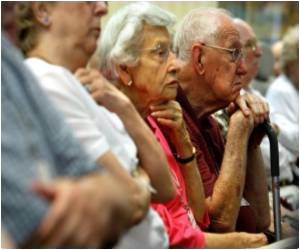
IESE scientists are working on an unobtrusive system that provides constant 'companionship' to elderly people living in single households or in retirement facilities. Multisensory nodes mounted to the ceiling of a room register an individual's movements.
"Our system records how long a person spends in what part of the home," noted Holger Storf, a scientist at IESE.
A radio signal transmits the data to a computer. Software documents the individual's daily activities, constantly learning the person's 'normal behavior.' The analytical software compares the resident's current activity with the model that has been generated. This is how it identifies situations that deviate from the norm-situations that could be an indication that the person has fallen, is lying unconscious on the ground and is in a helpless situation.
"If a person spends considerably longer in the bathroom, for instance, or in some other place in the home, this is registered. To prevent false alarms, the first response is to prompt the individual," explained Storf.
This can be accomplished with a telephone call, for instance, or by means of a touchscreen monitor with an integrated speaker. The individual can then respond by touching the monitor. Should the elderly person fail to respond, the software sends a text message to a trusted individual such as a family member or caregiver.
Advertisement
Unlike other systems, neither cameras nor microphones are required. Senior citizens do not need to carry sensors on their person, either. Because the system operates via radio signal, there is no need to install wiring. The system is easy to install.
Advertisement
Source-ANI











